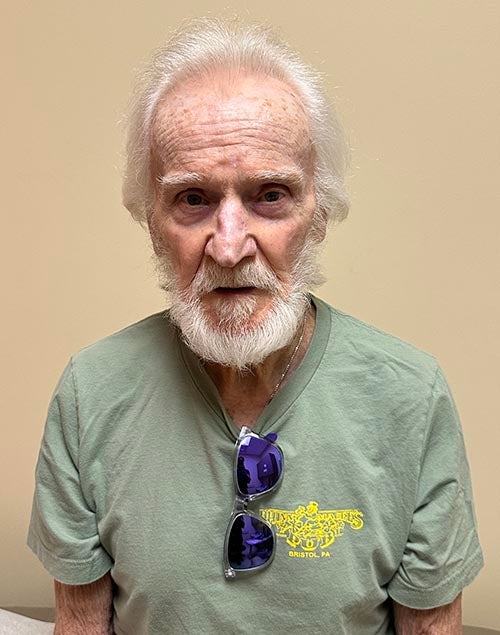New Navitor valve at St. Mary Medical Center helps 78-year-old reclaim his life
October 15, 2025Categories: Patient Testimonials
Tags: Cardiology
 St. Mary Medical Center is leading the way in transcatheter aortic valve replacement (TVAR) procedures, especially when it comes to high-risk patients.
St. Mary Medical Center is leading the way in transcatheter aortic valve replacement (TVAR) procedures, especially when it comes to high-risk patients.
In November 2024, the hospital was the first in Bucks County to use the Abbott Navitor valve—the latest to be approved by the FDA. Navitor joins the previously approved Edwards and Medtronic valves, all offered at St. Mary, to give patients and their cardiologists a trio of options to explore.
“I want to be able to choose the best route for my patients, so that’s why I wanted to have all three platforms at St. Mary,” says interventional cardiologist Hitesh Raheja, MD, director of the structural heart program at St. Mary Medical Center.
According to Dr. Raheja, no matter which valve is used, the TAVR procedure itself is similar. Typically, it involves replacing a narrowed or diseased aortic valve with a new one via catheter, which is inserted through a small incision in the groin. Though TAVR is always minimally invasive, the Navitor valve adds an extra layer of safety and comfort for high-risk individuals.
“Delivery of the valve is much more stable in this platform,” says Dr. Raheja. “Compared to the Medtronic, this valve has larger cells. So if a patient comes again one year down the line with a heart attack and we need to go into the coronaries again, this valve is much more suitable. Also, if we think they’ll need intervention on the coronaries in the future, we should put this valve because we know that it’s easier to get into the coronaries later from it.”
Other advantages to the Navitor valve include its smaller size, which is ideal for patients with small arteries in the leg; leak cups, which capture any unwanted leaks after the valve is deployed; and flexibility. A CAT scan helps determine whether Navitor, Edwards or Medtronic is the best option.
So far, Dr. Raheja has successfully installed the Navitor valve in several patients, including James Magee, 78. For about two years prior to his TAVR procedure, Magee experienced progressively worsening shortness of breath and fatigue. Even while walking on flat surfaces, Magee felt winded and needed to rest after a few minutes, which he previously never had to do.
“Everything went great, as far as I’m concerned. I’m walking again, exercising, working out, all of the stuff that I used to do before.” – James Magee
His ultrasound of the heart showed severe narrowing of the aortic valve, which connects the heart to the rest of the body. Since Magee was not considered a good candidate for open heart surgery due to his age and other comorbidities, Dr. Raheja performed the minimally invasive TAVR procedure through his leg artery using the new Navitor valve.
The valve replacement was a success. Magee was up and moving within four hours and was discharged two days later. It’s been a few months since the procedure and he’s thrilled to be feeling like himself again. He can now walk over 3 miles, do sit-ups and complete 100 push-ups without feeling fatigued.
“Everything went great, as far as I’m concerned,” says Magee. “I’m walking again, exercising, working out, all of the stuff that I used to do before.”
For anyone who is experiencing similar symptoms and may be a candidate for TAVR and the Navitor valve, Magee has some simple words of advice: “I’d say go for it.”
